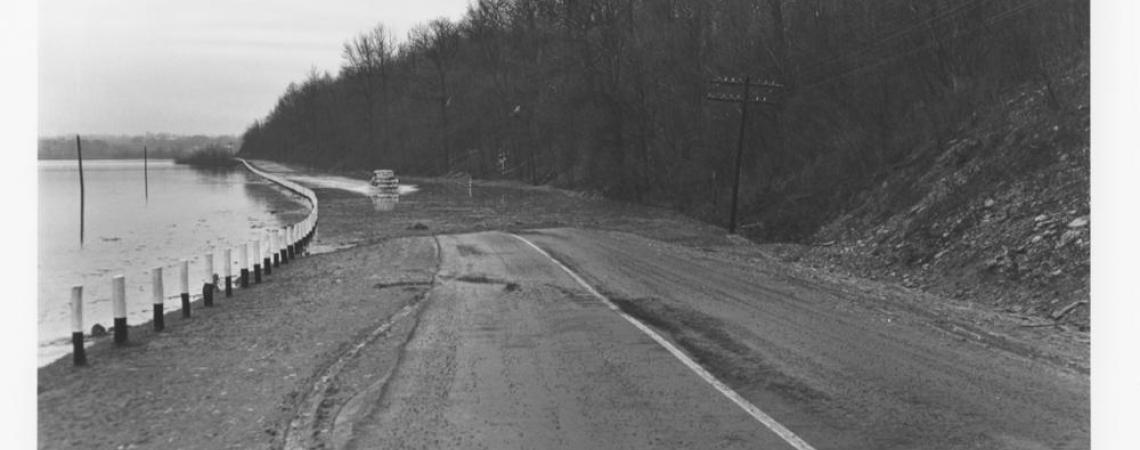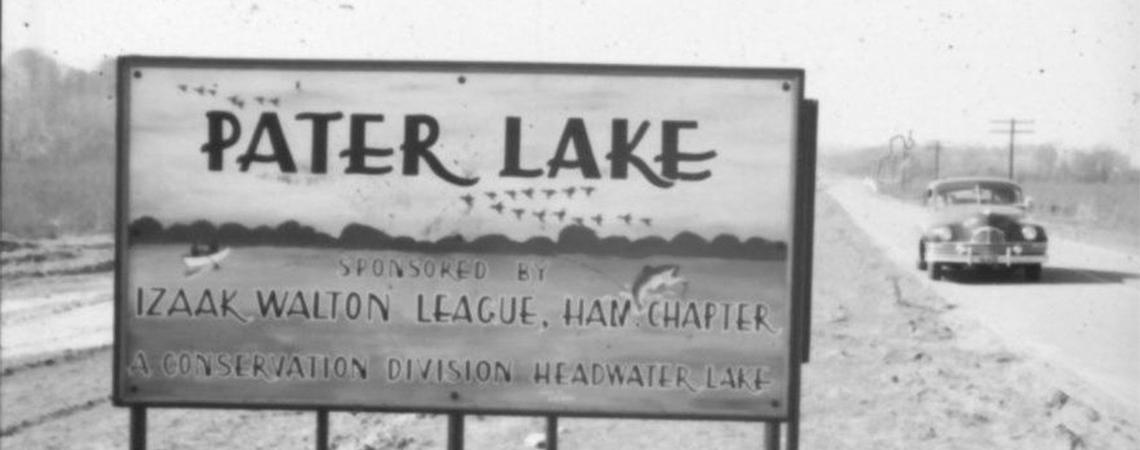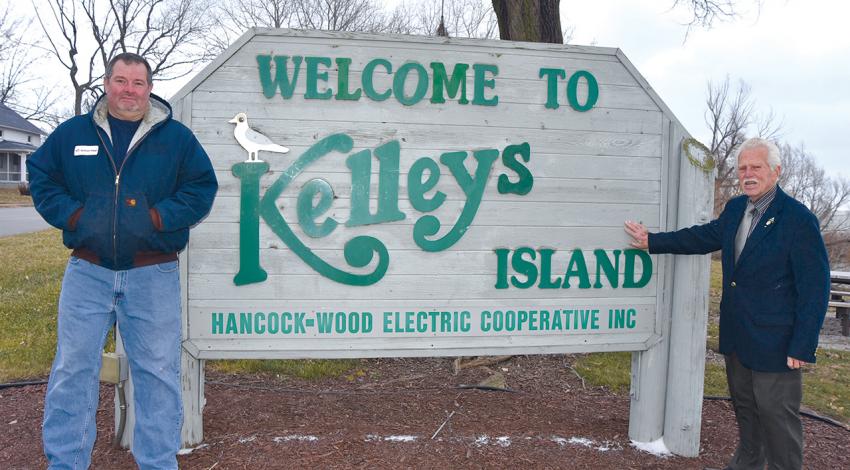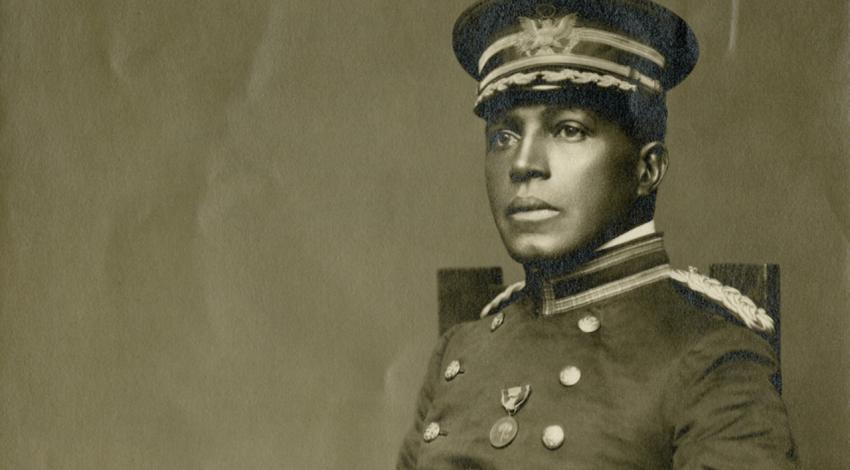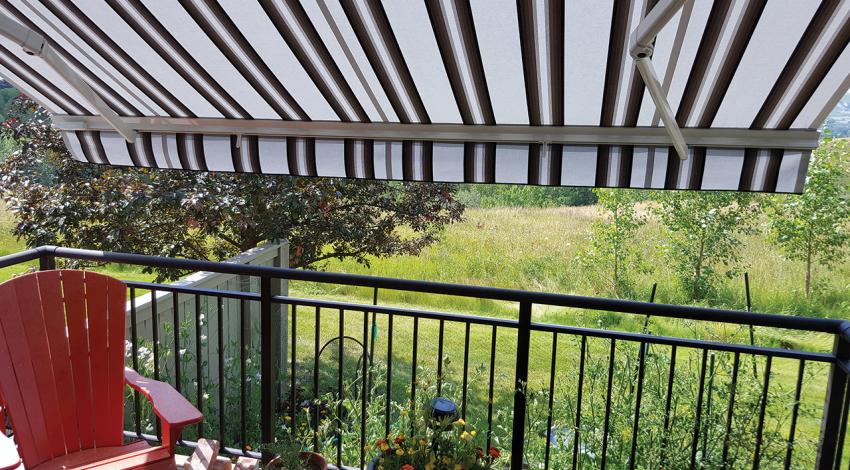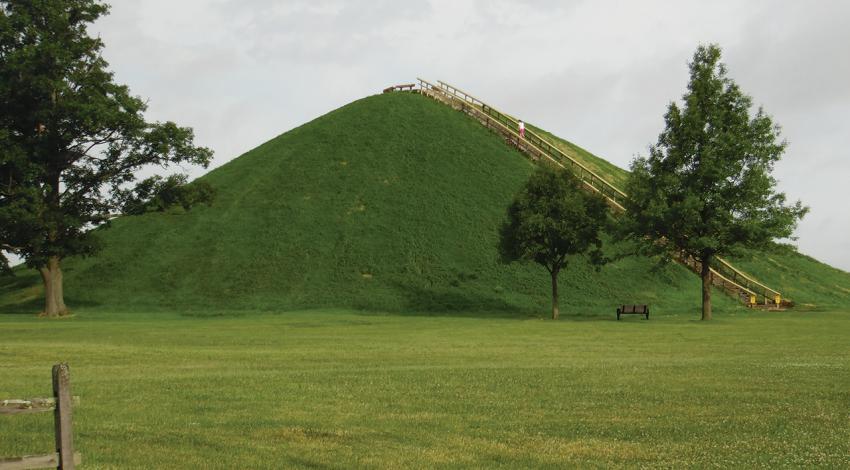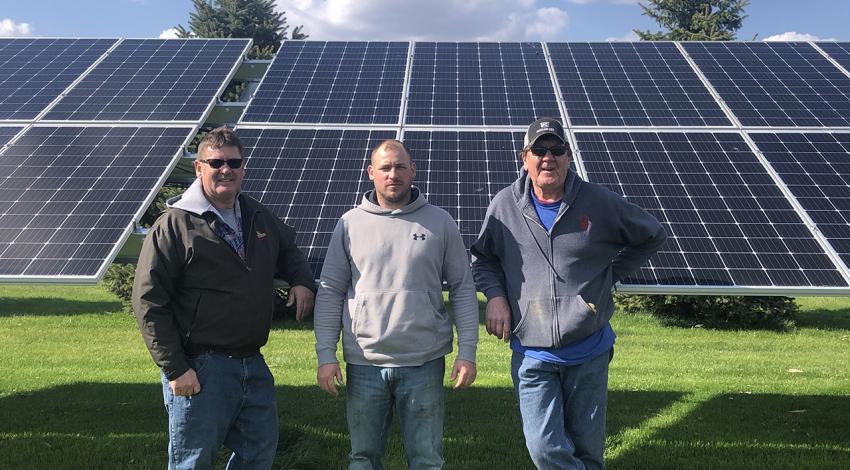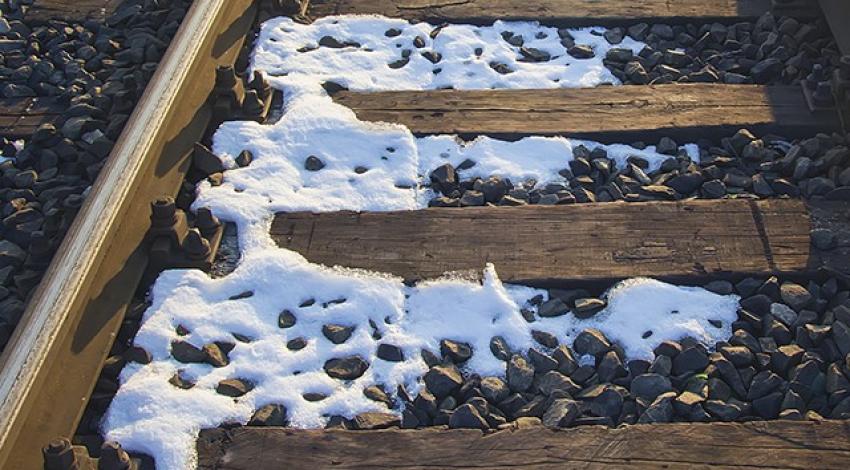This is the story of a failed state park and its lake. To tell it faithfully, though, I need to tell you how I came across it. To do that, I need to first beg forgiveness, because I fibbed 44 summers ago.
When I was a boy, I worked in a supermarket fetching carts and sacking groceries. It was a fun job, a social outlet, and I met a great many wonderful folks. But it was work, after all, and I enjoyed catching smallmouth bass a whole lot more.
Indian Creek was my home waters, and I explored its every reach, from the Indiana line downstream to Millville. On one occasion I faked the flu, skipped work, and headed to the creek. I recall the day for two distinct reasons.
After the rains, a flooded road that led around the lake toward Reily (courtesy Reily Historical Society).
First, I encountered the ruins of curious concrete edifices in the creek bed that were clearly relics from another time. Old sycamores and silver maples grew thickly through cracked concrete. A tall tower stood there, orphaned, in what seemed the most out-of-the-way place. Not 40 yards away, Indian Creek bent into a deep pool beneath sheltering box elders. That leads to the second reason for the memory: It was there that I hooked a smallmouth bass as long as my forearm and thick as a pillow from the smallest of waters. I deserved the private anguish that followed, given I couldn’t tell anyone — especially my parents — about the bass, because I should have been sacking groceries.
So now, about that lake, and that park that wasn’t.
I have come to understand that the concrete relics embody the desire and tenacity of local folks wanting to improve their quality of life during the Great Depression. The Hamilton Chapter of the Izaak Walton League, a national conservation organization, lobbied the FDR administration circa 1935 to have the Works Project Administration build a dam and plant the seeds of a state park with a lake between Hamilton and Reily, a quaint town nestled between gentle hills, bisected by the meandering Indian Creek in Butler County, near the Indiana state line.
The WPA built other small dams in Ohio, but never got to Reily. The Depression waned and the WPA became a postscript to hard times, but the Waltonians never gave up. Finally, in 1947, the Ohio Division of Conservation relented and contracted the construction of an earthen and concrete structure across Indian Creek, projected to create a 185-acre lake within what was to be a 300-acre state park, both named Pater Lake. The dam was completed in December 1949.
Then it rained. And rained some more.
Math problems are unforgiving; they are either right or they are not. Sure, you can show your work for credit, but if the answer is wrong, it’s wrong. And it gets complicated when equations involve measuring rainfall and land surface area and the projection of improbable events that one cannot possibly accurately foretell.
According to records provided by the Reily Historical Society, a National Weather Service rain gauge at Oxford measured nearly 15 inches of rain in the first six weeks of 1950. Pater Lake rapidly filled, and promptly overflowed.
A math error revealed itself. The designing engineers failed to take into account the land surface area in the headwaters of Indian Creek inside Indiana. The road running to Reily flooded, as did farmland. In an emergency measure, the dam was breached to save property and prevent loss of life. Photos taken in February 1950 show a torrent coming over the spillway.
Crestfallen, no doubt, the Waltonians did not give up. They continued to press for a dam repair for several years, but it was not to be. The cost to fix the mistake was prohibitive, and the site was determined not to be as suitable as once thought. State officials turned their energies north of Oxford to Hueston Woods.
Had someone checked the engineers’ math, it would have saved a great deal of money and heartache. Ten years after the expected christening of a new state park, in 1960, Pater Lake Park was accessioned by Butler County’s MetroParks, sans a 50-foot-deep lake. Indian Creek still tumbles on toward the Great Miami, unimpeded.
I confess my irresponsibility that summer day in 1979, but, by gosh, that smallmouth bass was enormous.

